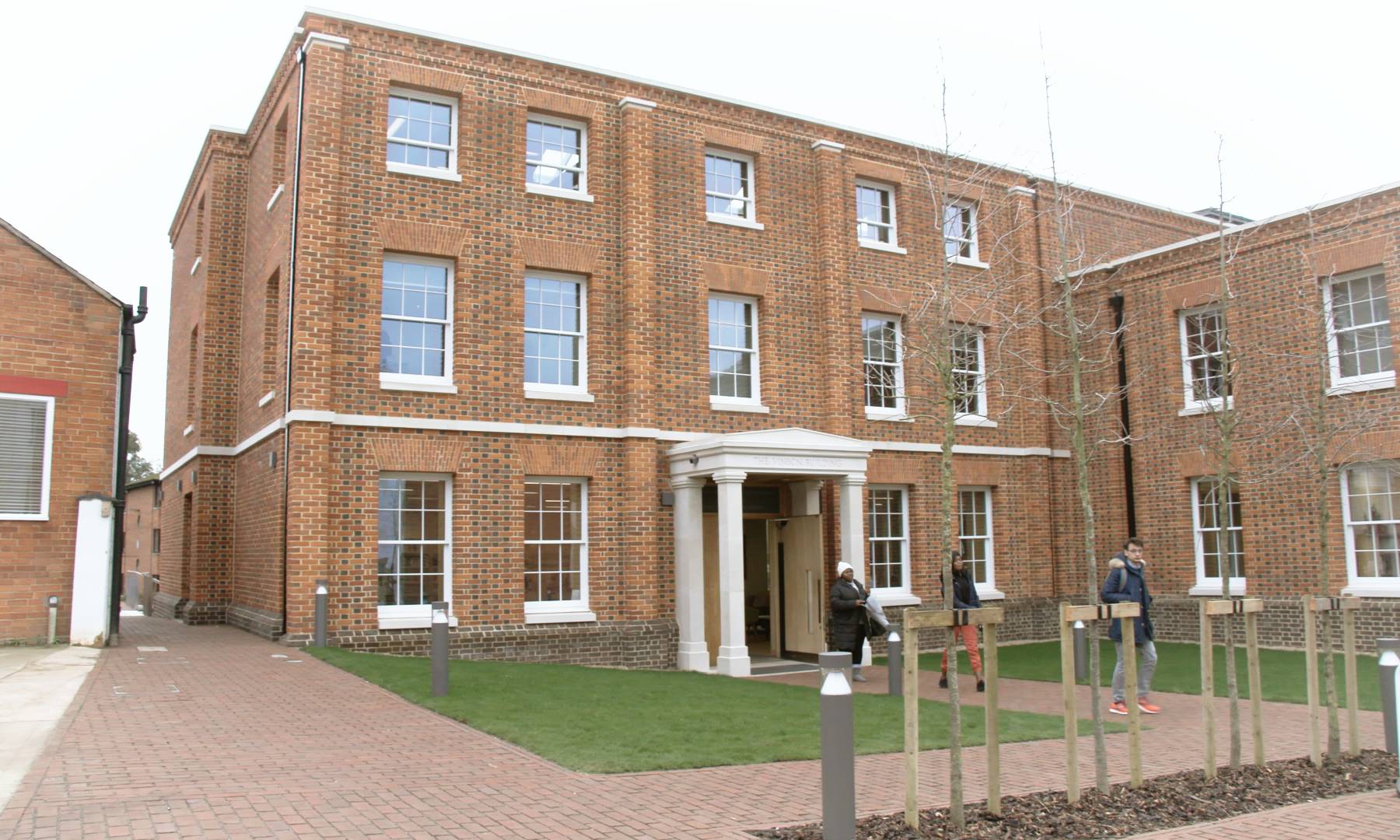Founded in 1976, Buckingham is an independent university with a teaching and residential estate that stretches across two main campuses and more than four centuries.
Its picturesque Hunter Street and Chandos Road site sits around a tranquil U-shaped bend in the River Ouse and comprises an eclectic mix of buildings.
These range from the newly-built Vinson Centre for Economics and Entrepreneurship, opened in 2018, to the 17th century Tanlaw Mill, now home to the students’ union.
Just under a mile away is Verney Park, which includes a former Franciscan friary that has been converted into residences, a library, language laboratories and tutorial and lecture rooms.
In all there are some 58 buildings, all requiring effective and efficient commercial or domestic heating systems powered by more than 120 boilers.
Together they meet the lifestyle needs of more than 3,000 students, of whom over 500 are in student accommodation, studying in Schools of Business, Dentistry, Education, Humanities and Social Science, Law, Science and Medicine.
Sara Daniels is the University’s Property Systems Officer, responsible for everything from heating systems to air conditioning, lift maintenance to fire alarms.
“Mental well-being and happiness are incredibly important to us here in the University of Buckingham so it’s essential we maintain a comfortable environment for the teaching and learning to take place,” she said.
“But as well as that comfortable environment, if our systems are working efficiently then we can reduce our running costs, and their longevity means we don’t need to replace them so often. This will also benefit us with our carbon footprint, in line with our carbon policy.”
Faced with an aging estate, the University has put a major refurbishment programme in place, re-specifying and replacing seven plant rooms, with investment continuing on regular maintenance and further upgrades.
Karl Andrew, a Director of Andrew Pipework Services, said: “Some of the old plant in the university had been installed for up to 30 years. It was inefficient, some of the boilers were becoming obsolete.
“We installed new energy efficient boilers and pumps, backed up by Spirotech deaeration and dirt separation equipment to make sure the systems work better and more effectively.
“It’s important to expel the air from the system because where there’s air it creates corrosion and the pumps have to work harder, they can’t circulate the water as easily, using more energy.
“The corrosion creates more air and more corrosion in the form of magnetite and that will also result in poor system flow and cold spots in your radiators.
“If you are continually having to vent your heating system and radiators because of air it’s not good for the system or its longevity.
“At the University we have used multiple SpiroTop automatic air vents plus two SpiroCross AX and nine of the 4-inch version.
“Using a SpiroCross means we don’t have to make up a low loss header, as the SpiroCross acts as that. It’s three parts already fitted together as one, a deaerator, dirt separator and hydraulic balancing.
“For the filtration you simply blow down on a surface from a drain valve at the bottom and the debris is cleared. It’s easy.
“With those three parts already fitted, it cuts down on buying other equipment and it does it all in one.
“We have been using Spirotech for nearly 20 years. We like the quality and ease of fit and the products look good, which our customers like.
“The SpiroCross is not overly heavy and is good to install, all the faces and flanges are always really good to mate up to the pipework we are making and are really easy to bolt together. They come with their own insulation as well, which looks smart when it’s on.”


